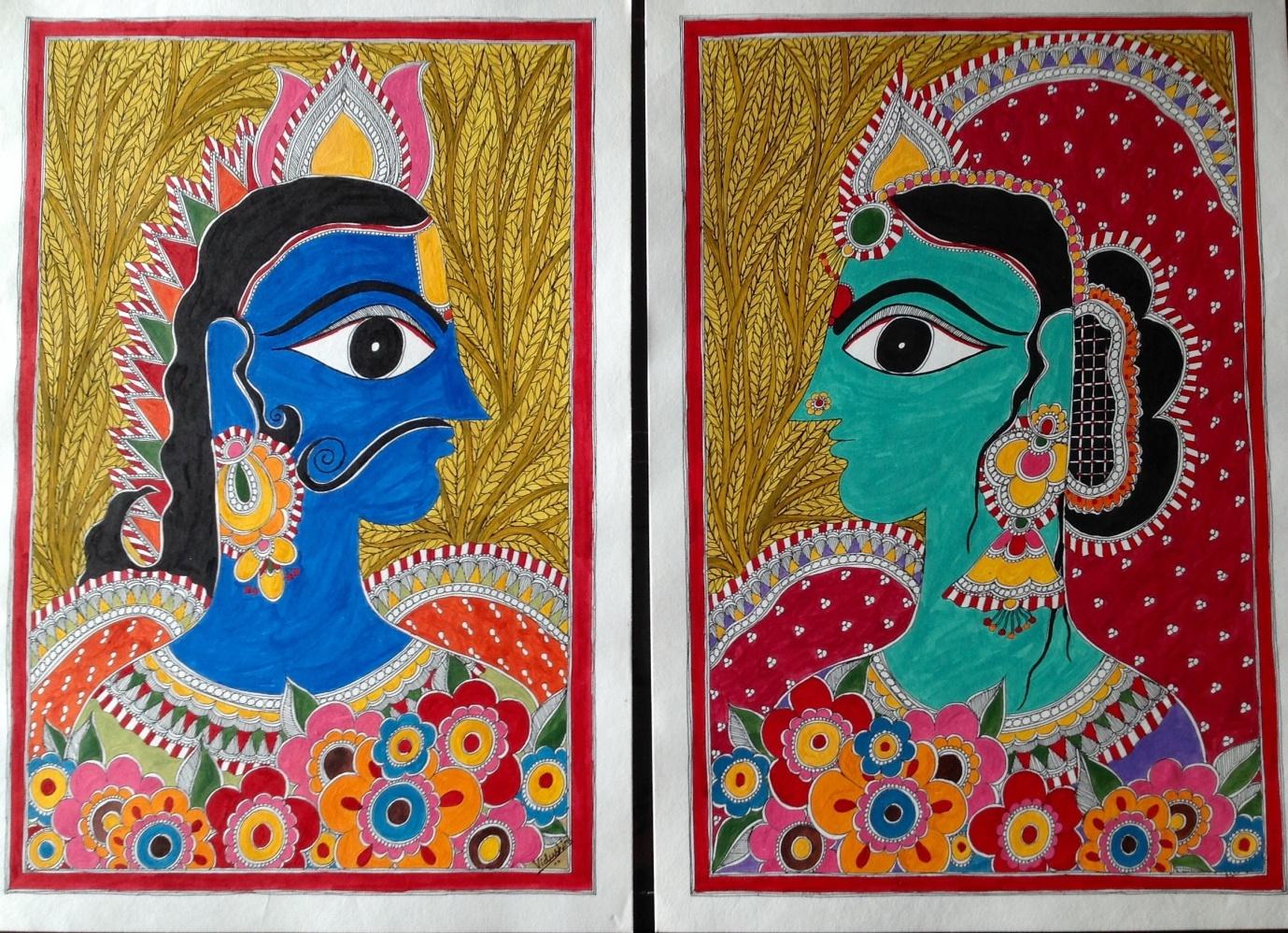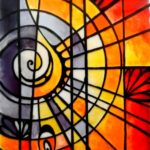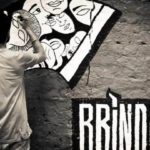Taking a look over the terrain tracked by Indian art over the past century shows a diverse range of artistic responses to reality. While in the early years Indian painters seemed to concern themselves primarily with the societal, the coming of the modernists and then the contemporaries, a younger group of artists born after independence, variegated India’s artistic outlook dramatically in the following decades. Artists’ assertions became, at different times, nationalist or modernist, socially responsive or intensely subjective, fiercely indigenist or defiantly international, or self consciously traditionalist or fashionably postmodernism. These moments were not, of course, mutually exclusive and did not necessarily follow in the order listed, but mirrored to a great extent the diversity of the artistic impulses developed in India during the 20th and early 21st centuries.

Well known artistic creation in temporary style
Traditional Indian Art
During the early and mid 1900s, one could discern three emphases common to artistic practice in most countries with a colonial past: an interrogation of Western influences on artistic expression, the overpowering need to establish a distinct identity and idiom for Indian art, and an engagement with the role and function of the artist in a country like India.
The questioning of the West, and the attempt to resuscitate the cultural identity suppressed by the British, commenced in early 1900 and took momentum from the ongoing nationalist or Swadeshi movement. An aspect of this project was the artistic rejection of the Romanticisation of Indian reality by Company Painters and the mannered portraits of Raja Ravi Varma and his followers.
The artists who adopted this mandate belong to what is termed the Bengal School of Painting. The main traits of the work in this school are the artist’s sources of inspiration, choice of media and artistic technique. Given their aims, the artists’ themes derived mainly from Indian mythology and religion; they also consciously followed the principles of painting they could discern in Indian miniature paintings and Indian sculptures, particularly temple sculpture and the frescoes at Ajanta. As oils were a Western medium, watercolor, tempera and ink and the Japanese wash technique were preferred.
Among the artists who expressed themselves through the form and style of this school were Abanindranath Tagore, Nandalal Bose, D.P. Roy Choudhury, A.K. Haldar, Kshitindranath Majumdar, Sarada Ukil and M.A.R. Chugtai. Some artists, like Rabindranath and Gaganendranath Tagore, though allied with the school’s general goals, preferred more personal idioms, experimenting with concepts like cubism and executing paintings in strikingly modernist terms. It was in Tagore’s Shantiniketan Institute too that Ramkinkar Baij and Benode Behari Mukherjee expressed their love for nature and its rhythms in work that is today recognised as pioneering.
Other artists like Jamini Roy, in the spirit of Gandhi’s teachings, turned their gaze inwards to the simplicity of Indian folk art. A seemingly more direct challenge to revivalists like Ravi Varma came in the thirties from the bold, post-impressionistic colours of Amrita Shergill, and in the forties through the ‘socially responsive’ work of the Calcutta Group; the latter collective consciously choosing to integrate foreign influences in their work in order to enrich their art and create an artistic vocabulary that was both international and interdependent.

Traditional Indian Art
Contemporary Indian Art
It is clear that the modernism of the preceding decades prefigured the tone of Indian artistic practice in the late eighties and nineties. However, during this time, the preoccupations of the earlier part of the century were considerably attenuated and, with some younger artists, even become a non-issue. The hard facts of disappearing borders and a globalised economy made post-modernism the preferred artistic mode.
In keeping with the tenor of the times, photo and hyperrealism, installation art, new media creations, and digital representations found their way into Indian artistic and public awareness. The “hybrid mannerisms” excoriated by Jagdish Swaminathan became “hybrid signs”, and ironically, began to seem normal and familiar. However, even as many of the earlier divides blurred, and the borders between imported and indigenous seemed to suture, some rough edges continued to show.
During the 1990s, a pluralist and argumentative mood dominated the creation of contemporary art, highlighting the difficulties associated with the dawn of an age of information and instant gratification, and with the emergence and novel concerns of ‘the global Indian’. Dually charged by the excessive information they received and their personal responses to this environment, the work of artists like Shibu Natesan, Surendran Nair, Jayashree Chakravarty, Rekha Rodwittiya and G. Ravinder Reddy responded to newer and greater numbers of stimuli than any of their predecessors could have imagined.
With the old, outmoded dualities loosened, Atul Dodiya metaphoric montages took cognisance of the space in which Indians found themselves face to face with other citizens of the world, while Subodh Gupta used his paintings and installations to filter and magnify the everyday experiences of rural and middle-class Indians for a global audience. In the work of Baiju Parthan, the past and the present cohere without dissonance in a new, digitized realm, and Anju Dodiya personal struggles with the violence of the creative process were spelled out for viewers in her watercolours.

A Contemporary Indian Art
Like painting, contemporary sculpture evolved in accordance with new shifts in ideology and paradigm. Sculptors found that the only limits imposed on the techniques and materials they could use were those of their own imaginations. Traditional media like stone and metal were subjected to new treatments and unusual combinations, and inventive techniques like site-specific installations and kinetic sculpture gained popularity. In addition, boundaries between traditional disciplines like painting and sculpture were dissolved, with artists like Sudarshan Shetty, Anandajit Ray, Jagannath Panda and G.R. Iranna hybridizing the two through their practices.
With this contemporary wave came the opening up of the market for Indian art abroad, as also the profusion of art galleries within the country, meaning that the Indian artist now had no choice but to address a more diffuse audience, through themes that resonated with the local as well as the global. Today, the work of artists from the Indian diaspora, the blurring of design and art, and the videos, installations and digital spaces of an even younger generation of artists have all added new dimensions to Indian contemporary art, a seemingly nebulous concept ever-receptive to growth and change.

A museum show casing contemporary art
Through the trials and tribulations of its practitioners, Indian art has seen a different picture of a vital and vigorous creative practice over the last century. It is this frequently bewildering heterogeneity, this multiple and plural nature of Indian art which, perhaps, will eventually deliver up the insights its practitioners continue to pursue so dedicatedly.



Sam Peter
May 19, 2019Are you looking for Indian Traditional art , Folk art painting or Rajasthani Paintings ? IndianArtZone is an online art powerhouse that hosts prominent Indian artists. IndianArtZone has not only established itself as one of the most promising and dedicated original art galleries, but also continues to grow at an impressive rate, thanks to its dedicated team working to support artists and collectors alike. Visit http://www.IndianArtZone.com and turn your home or office walls into a magnificent colourful display array with gorgeous art by the India’s best leading artists.
james
May 19, 2019Are you looking for Indian Traditional art , Folk art painting or Rajasthani Paintings ? IndianArtZone is an online art powerhouse that hosts prominent Indian artists. IndianArtZone has not only established itself as one of the most promising and dedicated original art galleries, but also continues to grow at an impressive rate, thanks to its dedicated team working to support artists and collectors alike. Visit http://www.IndianArtZone.com and turn your home or office walls into a magnificent colourful display array with gorgeous art by the India’s best leading artists.
Sam peter
May 31, 2019Indian fort art has undergone a renaissance. It has evolved a long way. Willing to purchase this beautiful form of artworks? At http://www.indianartzone.com , they sell you with 100% Original, Hand painted Indian Folk art painting at affordable price. Why do you want to miss this opportunity? Drop by their website to have a look at their exquisite collection.
Joshua Aaron
February 18, 2020Thank you for such a comprehensive, clear, well written and beautifully illustrated article on the Comparison between Contemporary and Traditional Indian Art. Really enjoyed. look forward to reading out these kind of excellent articles. . I am a great fan of paintings and I have bought several paintings from different online stores. I like the paintings of Madhubani painting, Rajput painting, Kangra paintings and Traditional Indian Art.
I cannot imagine my life without these pieces of art for my home. They set the perfect tone for my mood. I cherish drinking a cup of tea and admiring the beauty of these pieces of artworks which gives me inner power boost.
My recent purchase was “CONTEMPORARY NATURE PAINTING”. I bought it from IndianArtZone and it is Very Beautiful and fits perfectly for my Living Room. They sell only original paintings and artist verified authenticity. I am very satisfied and appreciate their prompt shipping as promised.. I would suggest you for Contact them to know more.Again Thanks for sharing this Mr.Asif Kamal. Keep posting!! Good Luck!